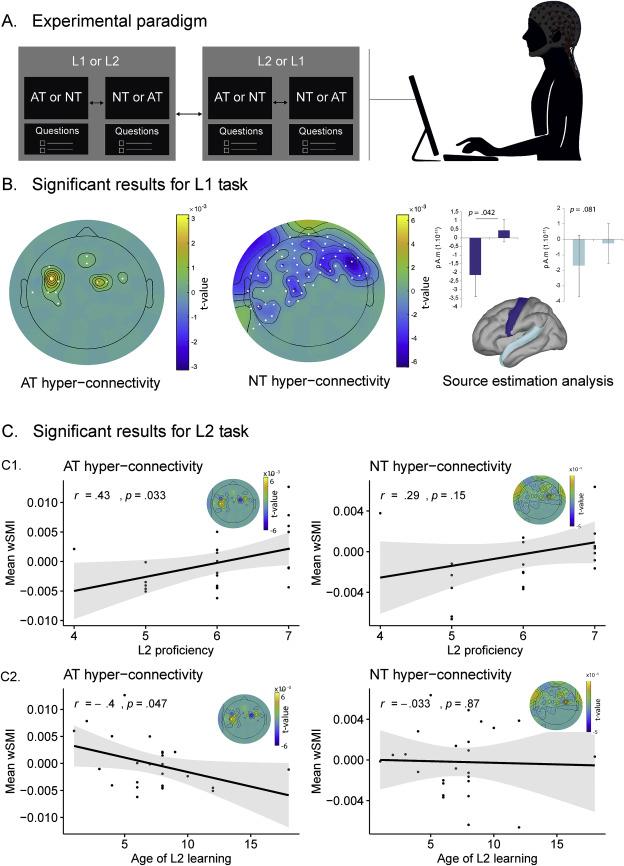20 de abril 2020
Abstract:
Do embodied semantic systems play different roles depending on when and how well a given language was learned? Emergent evidence suggests that this is the case for isolated, decontextualized stimuli, but no study has addressed the issue considering naturalistic narratives. Seeking to bridge this gap, we assessed motor-system dynamics in 26 Spanish-English bilinguals as they engaged in free, unconstrained reading of naturalistic action texts (ATs, highlighting the characters’ movements) and neutral texts (NTs, featuring low motility) in their first and second language (L1, L2). To explore functional connectivity spread over each reading session, we recorded ongoing high-density electroencephalographic signals and subjected them to functional connectivity analysis via a spatial clustering approach. Results showed that, in L1, AT (relative to NT) reading involved increased connectivity between left and right central electrodes consistently implicated in action-related processes, as well as distinct source-level modulations in motor regions. In L2, despite null group-level effects, enhanced motor-related connectivity during AT reading correlated positively with L2 proficiency and negatively with age of L2 learning. Taken together, these findings suggest that action simulations during unconstrained narrative reading involve neural couplings between motor-sensitive mechanisms, in proportion to how consolidated a language is. More generally, such evidence addresses recent calls to test the ecological validity of motor-resonance effects while offering new insights on their relation with experiential variables.


